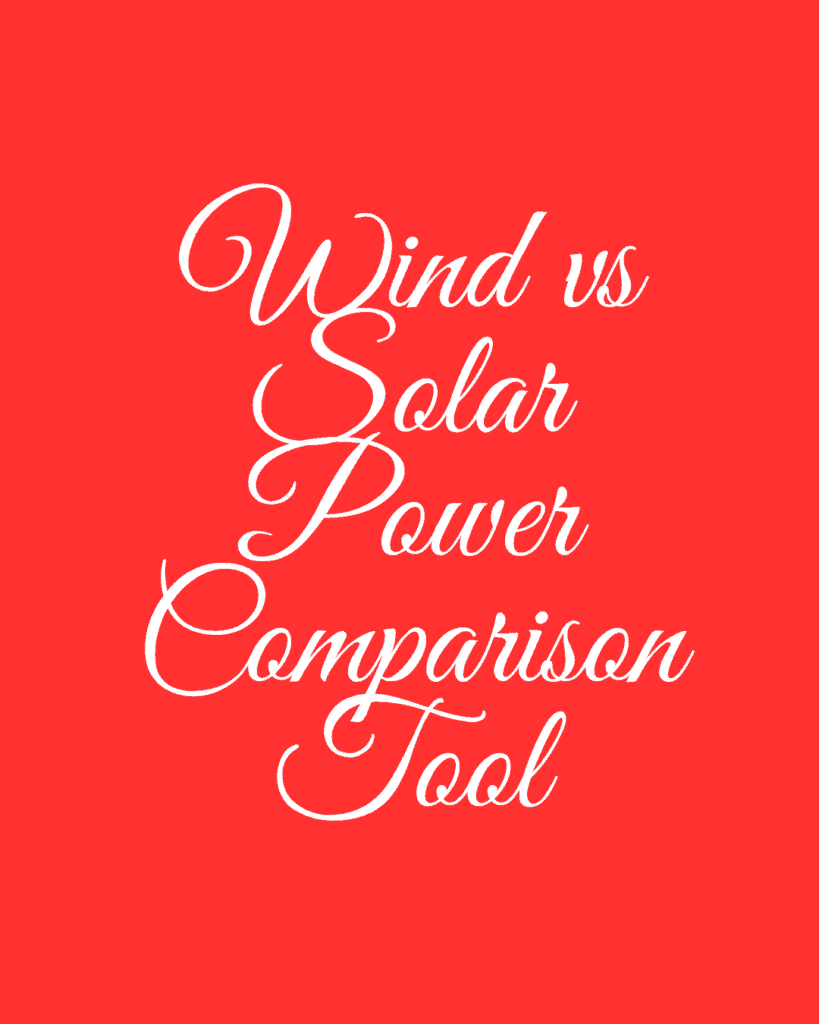Free Wind vs Solar Power Comparison Tool
Switching to renewable energy sources such as solar and wind power can be an exciting prospect. These systems offer an affordable alternative to fossil fuels, and prices for them are steadily declining.

Solar and wind energy both help reduce greenhouse gas emissions while being renewable sources, with no adverse climate change impact. They each differ considerably in terms of their energy requirements and environmental footprint.
Costs
Solar energy can save families money over time while helping the environment. Businesses may prefer wind power due to its lower cost and greater efficiency; wind energy also produces less carbon dioxide than solar panels while being more effective at creating electricity in low light or cloudy conditions.
Wind turbines need more space for effective operation, making them unsuitable in all locations. Furthermore, their noise may disturb wildlife. By contrast, solar panels are easy to install in urban and suburban regions because they don't produce noise and don't consume as many resources.
Solar systems typically produce more electricity at a faster rate than wind turbines, yet cost more up-front. Both options can be made more affordable with government incentives and rebates, with battery storage helping you remain connected during outages so your home stays powered with clean energy.
Costs vary based on your location and available sunlight or wind power; solar is more cost-effective per kilowatt hour than wind, making it more suitable in areas with abundant sunshine but low wind speeds. Hydropower may be another viable source, though its installation requires significant infrastructure investment and only works in places with significant water flow.
Solar and wind energy are both considered greener alternatives to fossil fuels, but each option comes with its own set of advantages and disadvantages. Solar works best in cities and suburbs while wind works best in open rural spaces; both can also be combined to increase your energy savings; off-grid or net metering users might consider hybrid systems featuring both solar power and battery storage for increased energy savings. Energy Matters connects you with installers who specialize in renewable energy solutions tailored specifically to you - get free quotes for solar, batteries and more today!
Efficiency
Solar and wind power have both proven their worth as sustainable energy solutions, leading the charge towards a greener future. Each has their own set of strengths and weaknesses; wind is generally more practical for utilities while solar provides more accessible renewable solutions for homeowners and small businesses alike.
Wind energy relies on large wind turbines that turn when the wind blows, producing electricity. You'll find these windmills everywhere from city outskirts and towns to wind farms; their conversion efficiency ranges between 20%-40% which is comparable with most modern solar panels - yet this doesn't take into account whether or not wind is available hourly or seasonally.

Solar energy systems typically boast conversion efficiencies between 15%-23%, making them more cost-efficient than wind power; however, they require direct sunlight in order to generate energy. Therefore, this makes solar an attractive choice for people in sunny regions, who can reduce their energy costs significantly and offset any fossil fuel usage with this clean alternative. Solar panels offer more viable residential alternatives as wind turbines require larger spaces while not producing electricity when there's no wind around whereas solar panels do.
Solar panels require very minimal maintenance needs and don't rely on special equipment to function, while being less susceptible to breakdowns than wind turbines due to having fewer moving parts. Both technologies should still receive regular cleaning using rain water or hose water; and battery storage could protect against power outages in case your net metering policy or stormy environment require this additional measure.
Environment
There is no question that both solar and wind energy are excellent choices for switching away from fossil fuels to renewable electricity sources, both being much cleaner and eco-friendlier alternatives to traditional fossil fuel power, while simultaneously helping us become less dependent on foreign oil. But each has different advantages and disadvantages when it comes to providing electricity for home use; depending on your energy needs and location, one may be better suited than the other.
Solar energy utilizes photovoltaic cells to convert sunlight into electrical energy for your home, using semi-conductive materials like silicon. Install them either on your roof or ground and they will turn sunlight into electricity - an ideal way to save money and help the environment with clean renewable energy.
Wind energy utilizes turbines to convert the kinetic energy of wind into electricity using an electric generator. Windmills can be found both residentially and at utility scale, providing electricity for entire towns or cities. Wind energy is more cost-efficient than solar due to its 24-hour production capability compared with limited capacity solar.
Solar and wind energy are great options for those trying to reduce their carbon footprint, as neither produces any emissions that would contribute to climate change. Both provide alternatives to fossil fuels which release tons of greenhouse gasses into the environment that contribute to global warming.

Solar energy is typically the more affordable and lower maintenance option for homeowners when compared with wind energy, as its installation and upkeep costs tend to be cheaper and requires less care and attention than wind energy systems. But don't dismiss wind as an alternative energy solution altogether! Wind can still provide cost-efficient fossil fuel replacement at scale. Furthermore, both solar and wind can work together towards creating more sustainable solutions; wind tends to work best at night while solar excels during daylight hours.
